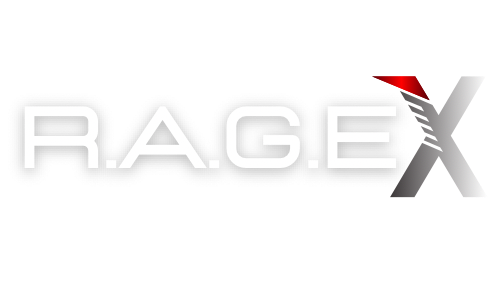Ukraine’s Thermite-Spewing ‘Dragon’ Drones: A New Weapon on the Battlefield

📍 Ukraine 🇺🇦
In the ongoing conflict between Ukraine and Russia, Ukrainian forces have introduced a new type of drone warfare involving “Dragon” drones that disperse the incendiary compound thermite over Russian positions. Over the past few days, multiple videos have surfaced showcasing the terrifying effectiveness of these drones, which appear to be increasingly used by Ukrainian units to target Russian troops hidden under tree lines, in trenches, and other fortified positions.
Key Developments:
• Introduction of Dragon Drones: Ukraine’s use of “Dragon” drones capable of dropping thermite—a highly incendiary compound—has gained significant traction on the battlefield. These drones are being employed by various Ukrainian military units, such as the 60th Mechanized Brigade and the 116th Khorne Group, which have released videos showing the drones in action. The footage depicts drones pouring streams of thermite over Russian positions, effectively clearing foliage that provides cover and attacking dug-in enemy troops with deadly precision.

• How Thermite Works: Thermite is a pyrotechnic composition consisting of oxidized iron (rust) and aluminum powder. When ignited, the chemical reaction between these components generates an intense heat of approximately 4,440 degrees Fahrenheit (2,450 degrees Celsius). This heat is sufficient to melt through metal, making thermite an extremely effective incendiary material. In military applications, thermite is used in grenades, artillery shells, and now, drones. When deployed, it can burn through fortified positions, destroy equipment, and pose a severe risk to any personnel caught in its path. Notably, thermite does not explode like conventional explosives; instead, it burns at a very high temperature, causing fire damage over a wider area.
• Tactical Advantages: The “Dragon” drones offer several advantages on the battlefield. Unlike traditional small weaponized drones, these can create wide-area effects with precision, minimizing the risk to the drone operator while delivering substantial damage to enemy positions. The psychological impact of these drones is also notable; seeing streams of burning thermite raining down is likely to instill fear and panic among enemy troops.
• Units Deploying Thermite Drones: The 60th Mechanized Brigade posted a video montage showing one of its drones dispersing thermite over a Russian position, dramatically describing their drones as “wings of vengeance” and referencing Vidar, the Norse God of Vengeance. Similarly, the 116th Khorne Group expressed frustration over the premature revelation of this technology on social media but still shared their own footage, demonstrating the effectiveness of thermite munitions.
• Responses and Reactions: The Ukrainian Ministry of Defense (MoD) confirmed the use of these thermite-spewing drones, highlighting their potential to strike with accuracy while minimizing collateral damage. The precision with which these drones can deploy thermite makes them a valuable addition to Ukraine’s arsenal, particularly in countering Russian positions concealed under natural cover or in entrenched locations.
• Russian Use of Similar Technology: Reports suggest that Russian forces are also experimenting with thermite-dropping drones. A video released by the Ukrainian Landmines and Coffee Telegram channel showed a drone using “ignition elements from a 120 mm mortar mine” to disperse thermite, but it appeared to be less advanced compared to the Ukrainian counterparts.
• History of Thermite Use in the Conflict: The use of thermite is not entirely new in the conflict. In May 2022, videos emerged showing Russian forces possibly using thermite-laden artillery shells to bombard Mariupol and later, the city of Marinka in Donetsk. The footage showed fiery clouds descending from the sky, burning large swathes of land indiscriminately.
• Legal and Ethical Considerations: While the use of thermite as a weapon is not explicitly banned under the Geneva Convention, its deployment raises ethical questions. Protocol III of the Convention restricts the use of incendiary weapons against civilian targets and in areas where civilian objects are present. Human Rights Watch has criticized these provisions as “loopholes,” highlighting the significant suffering incendiary weapons can cause, not only at the time of the attack but for weeks, months, and even years after.
• Innovation in Warfare: The emergence of these thermite-dropping drones highlights the innovative approaches being adopted in modern warfare. Ukraine’s adaptation of uncrewed technologies and creative tactics on the battlefield reflects a broader trend of turning the conflict into a testing ground for new military strategies and innovations.
What is Thermite?
Thermite is a highly exothermic chemical mixture composed primarily of a metal powder (often aluminum) and a metal oxide (commonly iron oxide, or rust). When ignited, thermite undergoes an intense chemical reaction called a thermite reaction, producing molten iron and aluminum oxide while releasing a tremendous amount of heat, up to 4,440 degrees Fahrenheit (2,450 degrees Celsius). The result is a substance that can melt through metal, concrete, and other materials, making it extremely effective for military applications.
• Properties and Composition: The typical composition of thermite includes finely powdered aluminum and iron oxide. The reaction between these elements is not explosive but produces an intense heat capable of burning through almost any material. Because of its stability at room temperature and difficulty to ignite without a high temperature, thermite is considered a safe compound for handling until deliberately initiated.
• Applications: Beyond its use in grenades, artillery shells, and drones, thermite has been used in other military applications, including sabotaging enemy equipment, disabling artillery pieces, and destroying sensitive materials. In the civilian sector, thermite is sometimes used in metal cutting and welding applications, particularly for joining railway tracks.
• Military Effectiveness: The combination of its heat-producing capabilities and its ease of use in a variety of delivery methods, from artillery shells to drones, makes thermite an effective weapon on the battlefield. Its ability to incapacitate personnel, destroy equipment, and burn through fortifications without the need for explosives offers tactical advantages in certain combat scenarios.
In summary, the deployment of thermite-spewing “Dragon” drones marks another innovative step in Ukraine’s evolving military strategy, reflecting the country’s commitment to leveraging cutting-edge technologies in its ongoing conflict with Russia. As the use of these drones continues to develop, their impact on the battlefield could grow significantly, both physically and psychologically.
UkraineWar #ThermiteDrones #MilitaryInnovation #WarTechnology #ConflictNews
For more updates and detailed analyses, keep following reputable defense news sources.
CIS Security: Your Trusted Security Partner
For over three decades, CIS Security has been Lebanon’s foremost provider of specialized security services. From expertly trained security guards to advanced surveillance systems, we ensure comprehensive protection for businesses, residences, and high-profile events. Our expertise in conflict analysis and security technology makes us your go-to partner in today’s unpredictable world. Discover more at cissecurity.net and cissecurity.pro. Reach us directly at [email protected] for customized security solutions.




